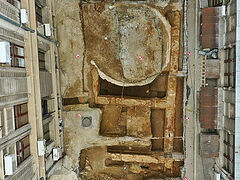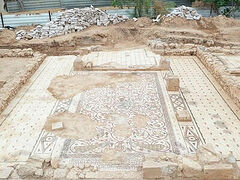Vienna, May 12, 2023
One of the oldest textual witnesses of the holy Gospels, a Syriac translation dating to the 3rd century, was recently uncovered by a researcher from the Austrian Academy of Sciences with the help of ultraviolet photography.
About 1,300 years ago a scribe in Palestine took a book of the Gospels inscribed with a Syriac text and erased it. Parchment was scarce in the desert in the Middle Ages, so manuscripts were often erased and reused. A medievalist from the Austrian Academy of Sciences (OeAW) has now been able to make the lost words on this layered manuscript, a so-called palimpsest, legible again: Grigory Kessel discovered one of the earliest translations of the Gospels, made in the 3rd century and copied in the 6th century, on individual surviving pages of this manuscript.
Until recently, there were only two known manuscripts with Old Syriac translations of the Gospel, Kessel explains. The fragments from this third manuscript, containing Matthew 11:30-12:26, were recently identified during the work of the Sinai Palimpsests Project.
The fragment, found as the third lay of text in a Vatican Library manuscript, “offers a unique gateway to the very early phase in the history of the textual transmission of the Gospels.”
The Syriac translation was produced at least a century before the oldest surviving Greek manuscripts, including the Codex Sinaiticus, the Academy writes.
“This discovery proves how productive and important the interplay between modern digital technologies and basic research can be when dealing with medieval manuscripts,” says Claudia Rapp, Director of the Institute for Medieval Research at the Austrian Academy of Sciences.
The team announced its find in a publication in the journal New Testament Studies in March.
Follow OrthoChristian on Twitter, Vkontakte, Telegram, WhatsApp, MeWe, and Gab!




